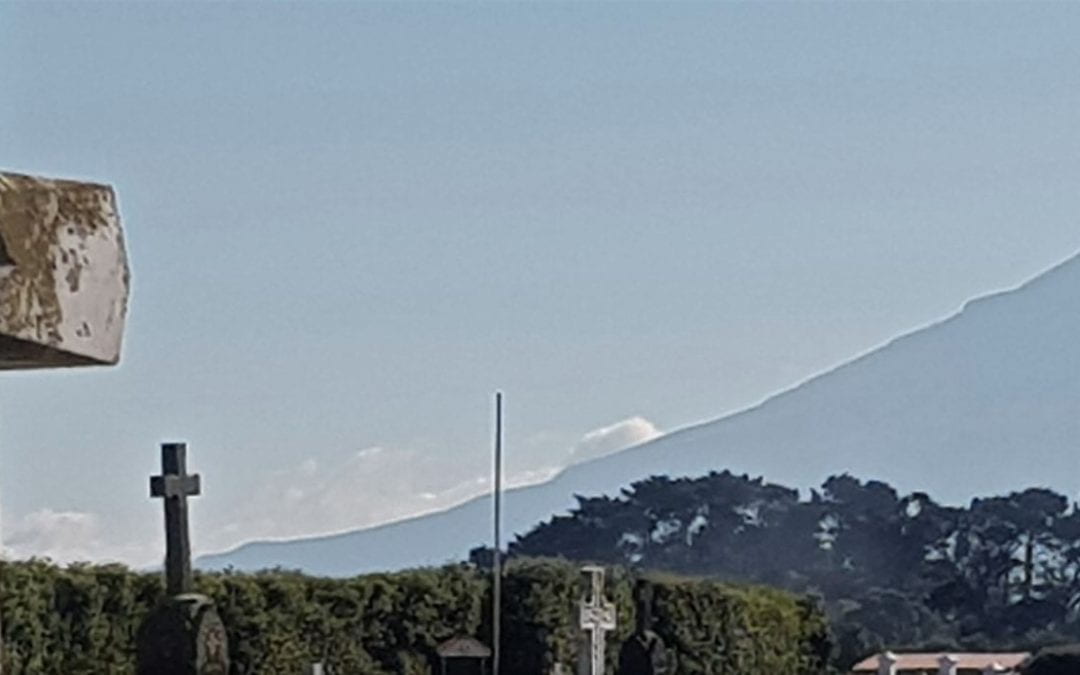When someone close dies, it presents an opportunity to think about what it means to lose someone and what it means for them to die. But it also offers an opportunity to think about the nature of one’s own death.
When other people die, I can observe what is going on as it unfolds and then to observe what happens afterwards. Because I witness what happens next, I am able to interpret other people’s dying as an absence of what had previously existed.
At one time they were living, breathing, interacting and communicating, and the next moment they are no longer there; against the backdrop of all that remains, they have turned into an absence.
But, when it comes to my own death, this vantage-point observing death as an absence, no longer applies. Its prospect throws up the possibility of the end of my consciousness. This finality places at risk the whole notion of a continuing world; the backdrop, as it were, is under threat.
Thinking of it as an absence only makes sense when it is contrasted with some form of continuity. My-death threatens this continuity and thereby disrupts applications of what we know about other-death to make sense of my-death.
The empathic appreciation of the death of someone close enables me to form an understanding of what it might be like to die. Exposure to people dying also elicits a wide range of emotional responses, including grief and anguish; strong emotions which can eclipse reflections on the nature of one’s own mortality.
Indeed, some of those in regular contact with the dying may struggle with opening up to such empathic connections and might even seek ways of mentally protecting themselves from what they are encountering. Nonetheless, the stark reality of losing a loved one does have the capacity to interrupt the flow of normal living and to prompt some thoughts about one’s own death.
For example, at a funeral, I could imagine it is my body lying in the coffin; lying there in the dark, waiting to be carried out. It would be my friends and family sitting with glum faces along the pews and someone recounting the highlights of my life. It would be they who would be wondering how life would be without me; both the good points and the bad. My departure would create a large absence in their lives.
To think this way, requires a triple maneuver. First, I need to project my lost loved-one’s soul out of his or her body and into a higher dimension. My second move requires me to visualize that person entering a pre-existing realm, some form of observation platform shared with others who have passed away. My third move would involve projecting my own existence into that same realm.
In this way I am able to interpret my mortality through the lens of what I think the death of others might be like and, accordingly, to frame my death as a transition into an ever-abiding realm.
However, my death, as encountered in its raw essence, is very different from the death of others. The concept of other’s death, as applied to myself, draws on the image of the self being projected outside itself thereby enabling us to talk about death as a parting, a leaving, a transition, a going somewhere else.
Encounters with my-death, in its true sense, confront us with no such simple way to think or talk about death. It is death stripped of transcendent images or mental maneuvers.
What is at stake is not the absence of someone in the world, but the status of the world’s existence in itself. My death poses the unacceptable and unthinkable prospect of not only the final annihilation of myself but also the annihilation of the world as a whole.
For more on thinking about my death see: Reflecting on the Inevitable: Mortality at the Crossroads of Psychology, Philosophy and Health
Text and photo by: Peter J. Adams


Recent Comments